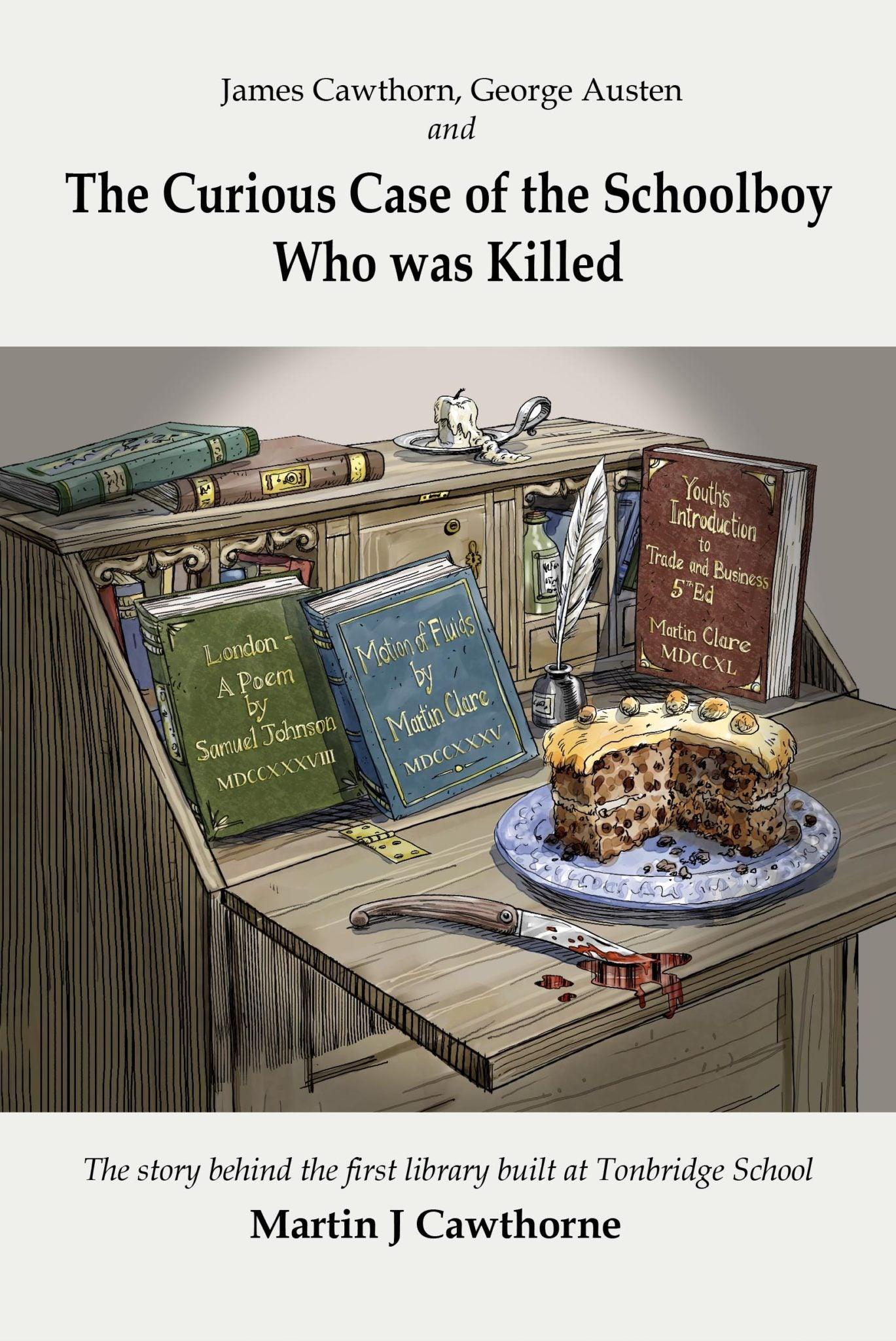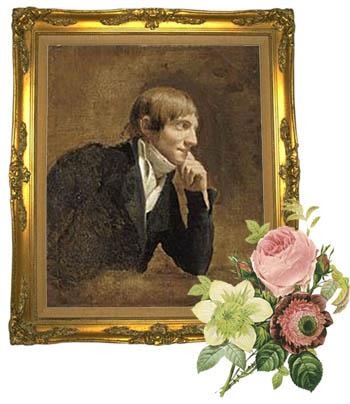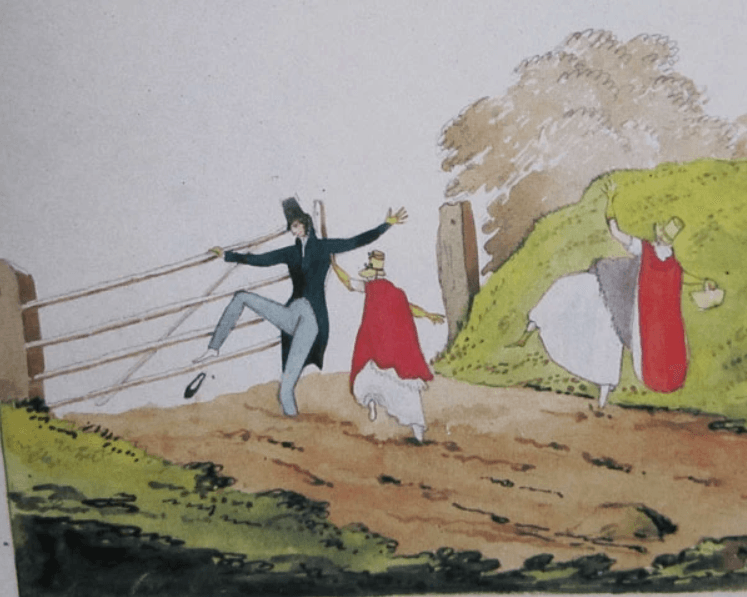
The Formative Years of George Austen, Jane's father
A look at James Cawthorn, George Austen and the Curious Case of the Schoolboy Who Was Killed by Martin J. Cawthorne  Jane Austen’s father, George Austen has many connections to the city of Bath. On the 26th April 1764 he married, by special licence, Cassandra Leigh in St Swithin’s, Walcot. The Austen family were regular visitors to Bath and in December 1800, after 35 years ministering in Steventon, George Austen announced his retirement and moved to Bath, where he spent his final years. He died in the city on the 21st January 1805 and is buried at St Swithin’s Church where a memorial to him has been erected. Jane Austen lived at home with her parents all her life and the Rev George Austen played a significant part in her life.
Jane Austen’s father, George Austen has many connections to the city of Bath. On the 26th April 1764 he married, by special licence, Cassandra Leigh in St Swithin’s, Walcot. The Austen family were regular visitors to Bath and in December 1800, after 35 years ministering in Steventon, George Austen announced his retirement and moved to Bath, where he spent his final years. He died in the city on the 21st January 1805 and is buried at St Swithin’s Church where a memorial to him has been erected. Jane Austen lived at home with her parents all her life and the Rev George Austen played a significant part in her life.
Apart from a brief period at boarding school, Jane was largely educated at home; George also provided writing equipment for her to develop her literary talent. The Rev Austen features in Jane’s correspondence and as a result much is known about his adult life. Very little, however, has been written about George Austen’s early life, before he met and married Cassandra Leigh.
It is known that he was orphaned at the age of six before going to school in his home town of Tonbridge, Kent, from where he won a scholarship to study at St John’s College, Oxford. However, very little has been written about these formative early years of his life – until now. Whilst at Tonbridge School, George Austen was educated under the instruction and guidance of one of the most significant headmasters in the history of the school – the Rev. James Cawthorn. A plaque commemorating Austen’s time at Tonbridge School under Cawthorn’s tuition was placed on the walls of the Cawthorne Lecture Theatre by the Jane Austen Society in 2015. Cawthorn is, however, an enigmatic and controversial character. He is most often remembered in histories of the school for being a strict disciplinarian who locked a boy in a cupboard and forgot about him so that the boy starved to death. This in turn gave rise to the school’s “favourite ghost story” with Cawthorn’s remorseful ghost haunting the corridors on the anniversary of his death, “with clanking chain and measured step”.
His dedication to the school was also such that during his tenure as headmaster the school got its first purpose built library. This appeared in part to have been funded from Cawthorn’s own pocket. He was also widely known as an aspiring poet and according to one account of his life, “Among literary people of the eighteenth century Mr Cawthorn was a man of considerable reputation”. In 2016 Tonbridge School redeveloped their library in order to bring it up to date for the internet age. To mark the occasion, a parent at the school, Martin Cawthorne (who is distantly related to James Cawthorn) has written a book about his ancestor. A hardback format of The Curious Case of the Schoolboy Who was Killed, with a foreword by current headmaster Mr Tim Haynes, went on sale to the school community in January this year, with profits going to the school’s bursary fund. Martin Cawthorne has been researching James Cawthorn’s life for many years and a recurring feature of his research has been the number of occasions in which George Austen’s name appears. James Cawthorn spent part of his early life living and working in London, moving in the same social and literary circles as Stephen Austen.
Stephen was the bookseller uncle of George who first took in the orphaned child when he was abandoned by his stepmother after the death of his father. Cawthorn became Headmaster of Tonbridge School two years after George was enrolled as a pupil and was largely responsible for his formal education. He consistently promoted George’s interests with the Worshipful Company of Skinners who govern the school and was instrumental in helping him secure a Scholarship to enable him to study at Oxford. George in turn took an extended ‘Leave of Absence’ from his university studies in order to return to Tonbridge during the time in which Cawthorn’s library moved, quite literally, from the drawing board, to become a reality. In this regard George Austen played a significant role in the establishment of the first library at his old school.
The establishment of the library was however, not without controversy, and the unfortunate death of a schoolboy played a significant part in the saga. The controversy also resulted in George being stripped of his Oxford scholarship, but he continued to be supported by his headmaster and as a result was able to return to Oxford in order to complete his studies. James Cawthorn’s friendship with George Austen’s uncle, the apothecary Thomas Austen, also played a part in George being appointed as rector of Steventon and therefore in Jane being raised as the daughter of a Hampshire country clergyman. Martin Cawthorne’s research also highlights how James Cawthorn was indeed deeply involved with the eighteenth century literati and had connections to some of the key characters in the Enlightenment. He had masonic connections to William Hogarth, was a close friend of Samuel Johnson’s publishers, and was drawn into the controversy surrounding the publication of Henry Fielding’s The History of Tom Jones – A Foundling. His book not only casts a light on the style of the formal eighteenth century education George would have received at Tonbridge School, but also offers some intriguing insights into the broader literary influences to which the young scholar would have been exposed through his association and friendship with a hitherto overlooked character from his formative years.
Hardback copies of the book can be purchased through Tonbridge School by clicking here: all profits from the sale of this format go to the School’s bursary fund and in turn may be used to support the education of future boys who, like the young George Austen, may need financial assistance in order to further their education. Paperback copies of the book are available here and can also be purchased locally in Bath at Mr B's Emporium of Reading Delights
Enjoyed this article? If you don't want to miss a beat when it comes to Jane Austen, make sure you are signed up to the Jane Austen newsletter for exclusive updates and discounts from our Online Gift Shop.



2 comments
Hi Corinne,
It was George’s grandmother Elizabeth Weller who became housekeeper at Sevenoaks school in order to ensure her sons received a good education. This included George’s father William who subsequently trained as a surgeon and moved to Tonbridge where he married Rebecca Walter. The couple had three children, George, Philadelphia and Leonora. Rebecca died whilst the children were still young and William married Susanna Kelk. When William died a short while later the children were sent to live with their uncle Stephen, a bookseller in London. At the time of the children’s arrival, Stephen was in a publishing partnership that included a bookseller called Charles Hitch. One of the writers Hitch published was a schoolmaster and poet called James Cawthorn. In 1743 Cawthorn was appointed headmaster of Tonbridge School, and around the same time Stephen sent George to board there with the fees paid by another uncle, Francis. From Tonbridge George went to Oxford on a scholarship which he won with the support of his headmaster, Cawthorn, who also employed him as his deputy thereby ensuring he could fund his studies at Oxford. In short, Francis funded George’s schooling and Cawthorn ensured he could afford university.
I hope that helps.
MC
MartinC
I was under the impression that after George Austen’s father died, his widow, Rebecca moved with her children to Sevenoaks where she became the housekeeper of the school in exchange for the teacher educating her children. George, had the assistance of his Uncle Francis and was then able to graduate from Sevenoaks and go to Oxford.
Please clarify this if you can.
CorinneB
Leave a comment
This site is protected by reCAPTCHA and the Google Privacy Policy and Terms of Service apply.